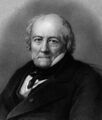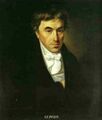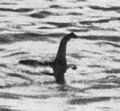Template:Selected anniversaries/April 21: Difference between revisions
No edit summary |
No edit summary |
||
| Line 27: | Line 27: | ||
File:Johann Friedrich Pfaff.jpg|link=Johann Friedrich Pfaff (nonfiction)|1825: Mathematician [[Johann Friedrich Pfaff (nonfiction)|Johann Friedrich Pfaff]] dies. He worked on partial differential equations of the first order Pfaffian systems, as they are now called, which became part of the theory of differential forms. | File:Johann Friedrich Pfaff.jpg|link=Johann Friedrich Pfaff (nonfiction)|1825: Mathematician [[Johann Friedrich Pfaff (nonfiction)|Johann Friedrich Pfaff]] dies. He worked on partial differential equations of the first order Pfaffian systems, as they are now called, which became part of the theory of differential forms. | ||
||1835: Samuel Slater dies ... industrialist known as the "Father of the American Industrial Revolution" (a phrase coined by Andrew Jackson) and the "Father of the American Factory System." In the UK, he was called "Slater the Traitor" because he brought British textile technology to America, modifying it for United States use. Pic. | ||1835: Samuel Slater dies ... industrialist known as the "Father of the American Industrial Revolution" (a phrase coined by Andrew Jackson) and the "Father of the American Factory System." In the UK, he was called "Slater the Traitor" because he brought British textile technology to America, modifying it for United States use. Pic. | ||
| Line 35: | Line 33: | ||
||1875: Teiji Takagi born ... mathematician, best known for proving the Takagi existence theorem in class field theory. The Blancmange curve, the graph of a nowhere-differentiable but uniformly continuous function, is also called the Takagi curve after his work on it. Pic. | ||1875: Teiji Takagi born ... mathematician, best known for proving the Takagi existence theorem in class field theory. The Blancmange curve, the graph of a nowhere-differentiable but uniformly continuous function, is also called the Takagi curve after his work on it. Pic. | ||
File:Percy Williams Bridgman.jpg|link=Percy Williams Bridgman (nonfiction)|1882: Physicist and academic [[Percy Williams Bridgman (nonfiction)|Percy Williams Bridgman]] born. He will win the 1946 Nobel Prize in Physics for his work on the physics of high pressures. | File:Percy Williams Bridgman.jpg|link=Percy Williams Bridgman (nonfiction)|1882: Physicist and academic [[Percy Williams Bridgman (nonfiction)|Percy Williams Bridgman]] born. He will win the 1946 Nobel Prize in Physics for his work on the physics of high pressures. | ||
| Line 97: | Line 93: | ||
||1992: The first discoveries of extrasolar planets are announced by astronomers Aleksander Wolszczan and Dale Frail. They discovered two planets orbiting the pulsar PSR 1257+12. | ||1992: The first discoveries of extrasolar planets are announced by astronomers Aleksander Wolszczan and Dale Frail. They discovered two planets orbiting the pulsar PSR 1257+12. | ||
||2013: Shakuntala Devi born ... mathematician and astrologer. Pic. | ||2013: Shakuntala Devi born ... mathematician and astrologer. Pic. | ||
Revision as of 19:15, 26 January 2022
1552: Mathematician and astronomer Petrus Apianus dies. His works on cosmography, Astronomicum Caesareum (1540) and Cosmographicus liber (1524), were extremely influential in his time.
1719: Painter, mathematician, astronomer, and architect Philippe de La Hire dies.
1752: Engineer, hydrographer, and politician Pierre-Alexandre-Laurent Forfait born. He will design and oversee the building of ships, making structural improvements and developing techniques to improve the disposition of cargo in ships' holds.
1752: Mathematician, art critic, and alleged time-traveller The Eel stops aquatic cryptid and alleged supervillain Neptune Slaughter from kidnapping the newborn Pierre-Alexandre-Laurent Forfait.
1774: Physicist, astronomer, and mathematician Jean-Baptiste Biot born. He will establish the reality of meteorites, make an early balloon flight, and study the polarization of light.
1822: Priest and inventor Hannibal Goodwin born. He will invent and patent rolled celluloid photographic film.
1825: Mathematician Johann Friedrich Pfaff dies. He worked on partial differential equations of the first order Pfaffian systems, as they are now called, which became part of the theory of differential forms.
1882: Physicist and academic Percy Williams Bridgman born. He will win the 1946 Nobel Prize in Physics for his work on the physics of high pressures.
1900: The Waking of the Slate ceremony is louder than ever.
1910: Writer, entrepreneur, publisher and lecturer Mark Twain dies.
1934: The "Surgeon's Photograph", the most famous photo allegedly showing the Loch Ness Monster, is published in the Daily Mail. (It will be revealed as a hoax in 1999.)
1965: Physicist and academic Edward Victor Appleton dies. Appleton made pioneering contributions to radiophysics, and was awarded the Nobel Prize in Physics in 1947 for his seminal work proving the existence of the ionosphere during experiments carried out in 1924.











